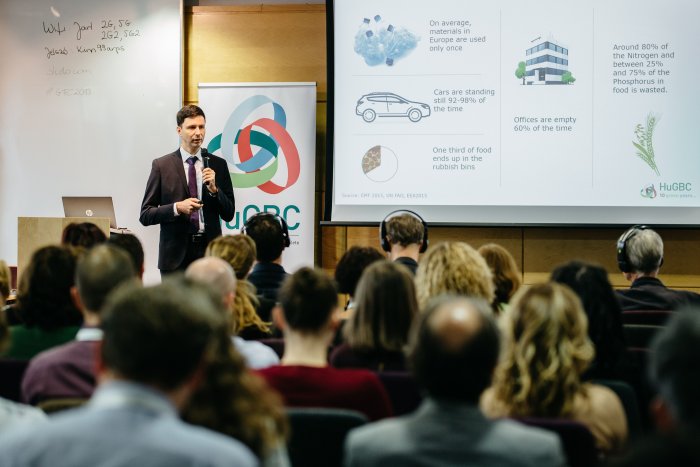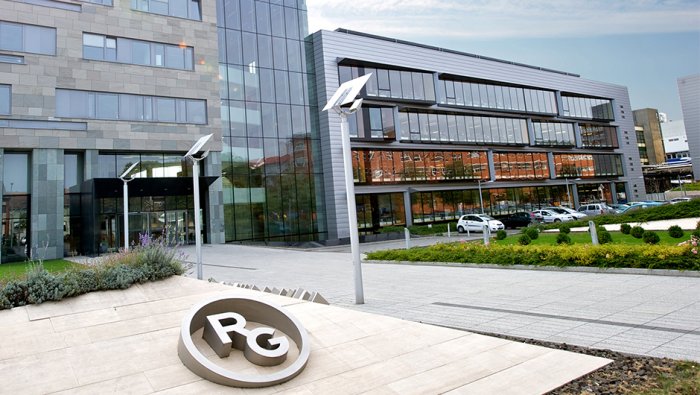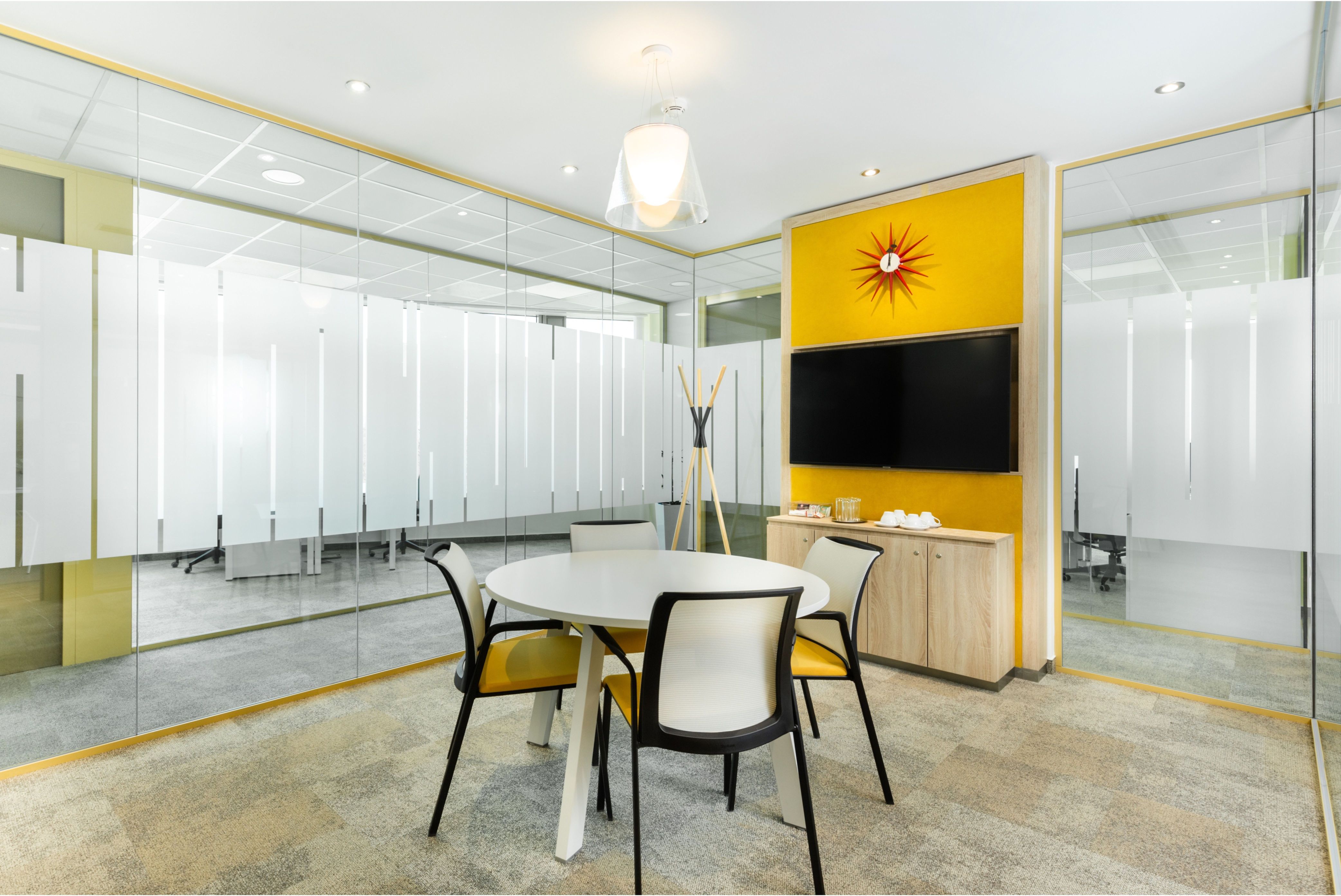HuGBC Promotes Concept of Circular Economy

The Hungarian Green Building Council (HuGBC) celebrated its 10th anniversary with its Green Future Conference 2019 on the theme of “Circularity in the Built Environment.” The concept incorporates issues of a low carbon footprint, low energy use and the use of non-toxic materials in construction.
Zsombor Barta at the Green Future Conference 2019.
This approach is increasingly being incorporated into, for example, the BREEAM accreditation system. The argument is that a sustainable building has to be constructed and managed on a circular basis that reduces its carbon footprint. In this way, the life span of a building is regarded as “circular” rather than “linear”.
This forms part of the wider concept of a circular economy that strives to eliminate waste and enables the continuous use of resources. This is regarded as a close-loop system that minimizes the use of resource inputs and designs out the creation of waste and carbon-emissions.
The circular concept is thus very different from the current model of a linear economy according to Dr. Bálint Horváth, associate professor at Kodolányi János University of Applied Sciences. He defines the steps of the traditional approach as production, distribution, consumption, disposal and waste. In this economic model, 90% of construction materials are not re-used. A circular economy is necessary to reach emission cuts targets by 2050 as agreed by EU governments.
The stakeholders in creating the circular economy are seen as investors, building-users and authorities by the construction engineer Remko Zuidema, founder of the Dutch BRIQS Foundation, which promotes the concept of a circular economy and sustainable societal systems.
“A sustainable building has a circular rather than a linear life-span, this involves reduced energy-use and carbon footprint. The concept of a circular economy with regard the use of materials has been developed in the Netherlands, a country with no natural resources,” he said. The Kingdom of the Netherlands was a sponsor of the HuGBC event.
The concept could be seen as market pressures and sustainability factors impacting on building developers at the same time.
Examples Needed
“There is a need for good examples of circular buildings to persuade developers to construct in this way. With the development of a higher quality building, the owners are able to receive higher rents. Therefore, more developers are looking at the concept with the use of as many generic, rather than specific, elements as possible with the creation of a building passport,” he added.
Zsombor Barta, president of the HuGBC, sees the recycling and re-use of materials in a building as one of the key elements of a circular economy. However, a further issue is how a building is used or utilized.
“We have heard a lot about new economic models like the sharing economy and if you can integrate these new economic models into the facility operation and maintenance and functions of the building, then you can refer to it as a circular building,” he argued.
“One of the economic models is that a building does not have a particular function but the function is also changeable and capable of being modified. For example, you do not have pre-defined offices for a specific tenant but these spaces can also be utilized for meeting rooms or for completely different types of functions, depending on the needs. Changes can therefore be made accordingly.
“In my view, a fully circular building or real estate is not only due to the materials used and a low environmental impact, but also in terms of usage. The concept still has to be developed with regard to the use of space,” Barta added.
He argues that the LEED and BREEAM sustainability systems have been integrated into the existing economic models; however, a circular economy model requires a completely rethought economic model
SUPPORT THE BUDAPEST BUSINESS JOURNAL
Producing journalism that is worthy of the name is a costly business. For 27 years, the publishers, editors and reporters of the Budapest Business Journal have striven to bring you business news that works, information that you can trust, that is factual, accurate and presented without fear or favor.
Newspaper organizations across the globe have struggled to find a business model that allows them to continue to excel, without compromising their ability to perform. Most recently, some have experimented with the idea of involving their most important stakeholders, their readers.
We would like to offer that same opportunity to our readers. We would like to invite you to help us deliver the quality business journalism you require. Hit our Support the BBJ button and you can choose the how much and how often you send us your contributions.








